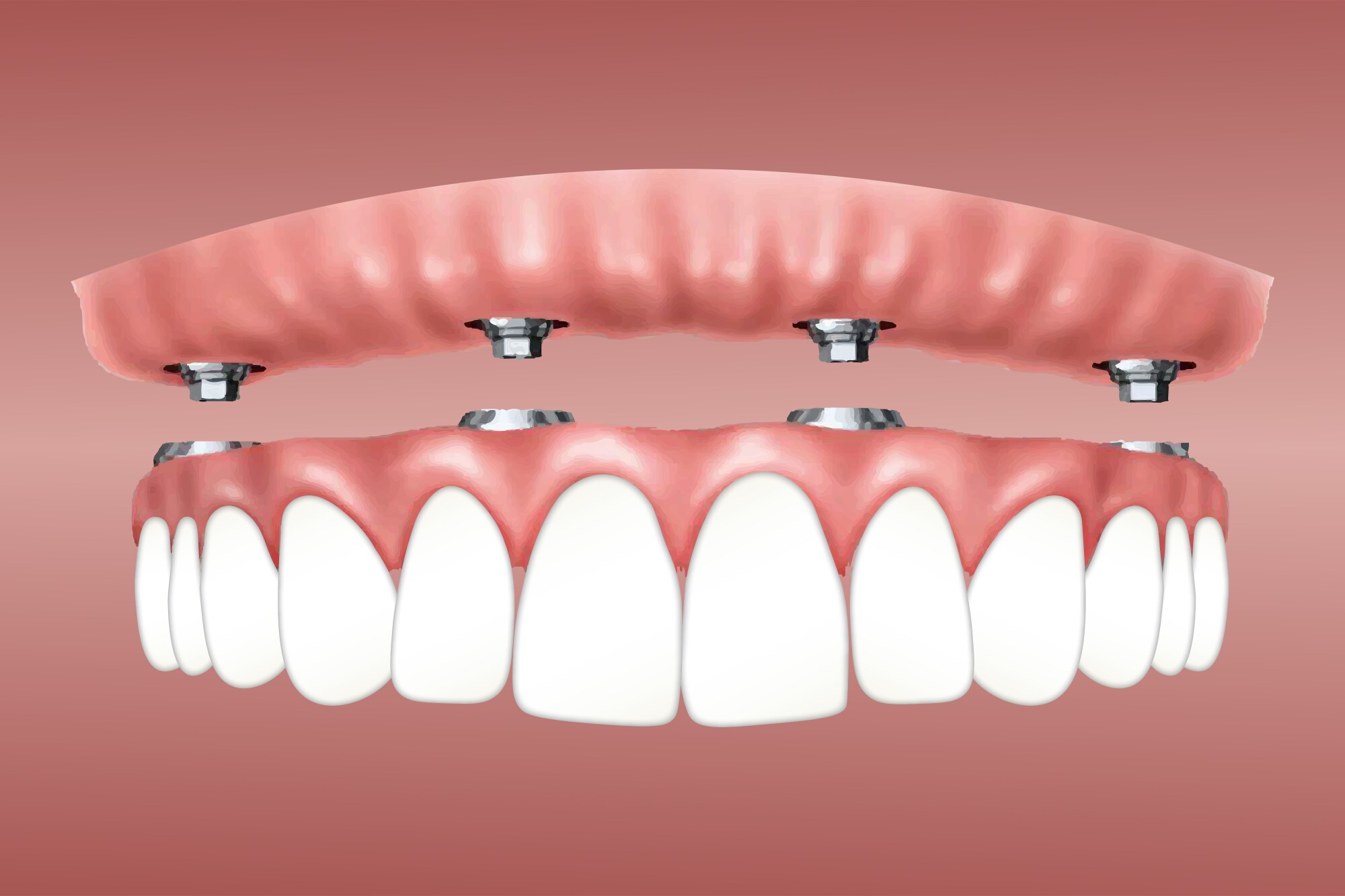Dental Sense Can Be Fun For Everyone
Table of ContentsDental Sense for DummiesSome Ideas on Dental Sense You Should KnowDental Sense for DummiesThe Buzz on Dental Sense
are medical tools surgically implanted right into the jaw to bring back an individual's ability to chew or their look. They provide support for synthetic (fake) teeth, such as crowns, bridges, or dentures. When a tooth is shed as a result of injury or illness, an individual can experience problems such as fast bone loss, malfunctioning speech, or adjustments to eating patterns that lead to pain.Dental implant systems contain an oral implant body and dental implant joint and might also consist of an abutment fixation screw. Professional teeth whitening. The dental implant body is surgically inserted in the jawbone in area of the tooth's origin. The oral implant joint is normally affixed to the dental implant body by the abutment fixation screw and expands through periodontals right into the mouth to support the affixed man-made teeth
(https://www.find-us-here.com/businesses/Dental-Sense-Miami-Florida-USA/34200016/)Structure of The Oral Implant System choosing dental implants, talk to your oral copyright regarding the potential benefits and risks, and whether you are a prospect for the procedure. Things to take into consideration: Your general wellness is a crucial aspect in identifying whether you are an excellent candidate for oral implants, for how long it will certainly require to heal, and just how long the dental implant may stay in location.
Cigarette smoking may affect the healing procedure and reduce the long-lasting success of the dental implant. The recovery procedure for the implant body may take a number of months or longer, during which time you typically have a momentary abutment instead of the tooth. the dental implant treatment: Carefully follow the oral health directions offered to you by your oral copyright.
The Greatest Guide To Dental Sense
Implant failure can lead to the need for an additional operation to deal with or change the dental implant system. Restores the capacity to chew Restores aesthetic look Helps keep the jawbone from reducing as a result of bone loss Maintains the health of the surrounding bone and gum tissues Assists maintain surrounding (close-by) teeth steady Improves high quality of life Damage to bordering natural teeth throughout implant placement Injury to the surrounding tissues throughout surgical treatment, such as sinus perforation Injury during surgery (for instance, fracture of bordering jawbone) Poor feature, such as feeling like the teeth do not bite with each other usually A sensation that the tooth is loosened or turning in location resulting from an abutment screw loosening Implant body failure (looseness of the dental implant body) because of systemic infection, which may be most likely in patients with unrestrained diabetes mellitus as a result of regional infection in bone and periodontals sustaining the dental implant body due to postponed recovery, which may be more probable in individuals who smoke Problem cleaning the gums around the dental implant, leading to inadequate oral health Neglected gum condition Post-surgical numbness as a result of nerve impingement or damages Constantly notify healthcare service providers and imaging specialists that you have dental implants prior to any type of magnetic resonance imaging (MRI) or x-ray treatments.
FDA is not mindful of any type of damaging events reported for MRI or x-ray procedures with oral implants. Dental implants systems are typically made of products that adhere to global agreement requirements of the International Company for Standardization (ISO) or ASTM International. These requirements have details of what makes a risk-free product.

A dental implant is a structure that replaces a missing out on tooth. With screw-like tools, the specialist inserts an implant into the jawbone, and it acts as an anchor for a man-made tooth, called a crown. A device called a joint links the artificial tooth to the dental implant. The crown is personalized to fit the individual's mouth and match the shade of their teeth.
A Biased View of Dental Sense
Some individuals are not eligible for dental implant surgical treatment. It is for oral cosmetic surgeons to operate individuals with: acute illnessuncontrollable metabolic diseasebone or soft tissue condition or infectionIf these concerns are fixed, an individual can have the surgical procedure. In, oral doctors avoid from operating on people with: If individuals with any one of the above undergo dental implant surgical treatment, there is a greater danger of the implant stopping working.

Dental dental implant surgery is a personalized procedure. Give you time to recover. Affix the message and last crown, bridge or denture.
Next off, your surgeon will thoroughly place the dental implant into your jaw. If your dental implant is near the front of your mouth, your dentist will make a short-term tooth for you to use until you heal.
The Dental Sense Statements
Your service provider can tell you what to anticipate in your circumstance. During the recovery phase, your jawbone needs to fuse to the dental implant. This procedure, called osseointegration, is critical for stability and lasting success. This process can take anywhere from 3 to nine months. In many cases, it may take much longer.
Once your dental implant heals, your dental professional can attach the abutment (little connector post) and your last reconstruction (crown, bridge or denture). This normally takes about one hour to complete and might require a 2nd small surgical treatment. You shouldn't feel any discomfort during your oral implant treatment due to the fact that your service provider will utilize drug to numb your periodontals.